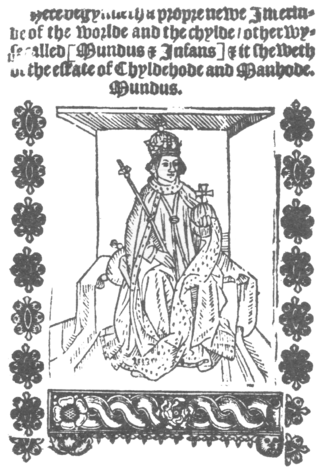External links


Mundus was the name of a furniture-manufacturing company, active (at least) in several places in the Austro-Hungarian Empire, at the end of the 19th century and early 20th century.
Factories seem to have existed in multiple locations, as the products carry diverse labels, such as "Budapest", "Borlova", "Czechoslovakia", etc. Some of the furniture was co-signed with "Jacob and Josef Kohn".
In 1914 Mundus merged with J. & J. Kohn, and in 1922 with Gebrüder Thonet.



Taoism or Daoism refers to a set of Chinese traditions and religions which emphasize living in harmony with the Tao. The Tao is generally defined as the source of everything and the ultimate principle underlying reality. The Tao Te Ching and the Zhuangzi are widely considered key Taoist texts.

Furniture refers to objects intended to support various human activities such as seating, eating (tables), storing items, eating and/or working with an item, and sleeping. Furniture is also used to hold objects at a convenient height for work, or to store things. Furniture can be a product of design and can be considered a form of decorative art. In addition to furniture's functional role, it can serve a symbolic or religious purpose. It can be made from a vast multitude of materials, including metal, plastic, and wood. Furniture can be made using a variety of woodworking joints which often reflects the local culture.

The World and the Child is an anonymous English morality play. Its source is a late 14th-century or 15th-century poem The Mirror of the Periods of Man's Life, from which the play borrows significantly while reducing the number of characters. It is thought to have influenced William Shakespeare's Henry IV, Part 1.

Walter Kohn was an Austrian-American theoretical physicist and theoretical chemist. He was awarded, with John Pople, the Nobel Prize in Chemistry in 1998. The award recognized their contributions to the understandings of the electronic properties of materials. In particular, Kohn played the leading role in the development of density functional theory, which made it possible to calculate quantum mechanical electronic structure by equations involving the electronic density. This computational simplification led to more accurate calculations on complex systems as well as many new insights, and it has become an essential tool for materials science, condensed-phase physics, and the chemical physics of atoms and molecules.

Gebrüder Thonet or the Thonet Brothers was a European furniture manufacturer. It continues as a German company, Austrian and Czech (TON).

The term New World is often used to mean the majority of Earth's Western Hemisphere, specifically the Americas. The term gained prominence in the early 16th century, during Europe's Age of Discovery, shortly after the Italian explorer Amerigo Vespucci concluded that America represented a new continent, and subsequently published his findings in a pamphlet he titled Latin: Mundus Novus. This realization expanded the geographical horizon of classical European geographers, who had thought the world consisted of Africa, Europe, and Asia, collectively now referred to as the Old World, or Afro-Eurasia. The Americas were thus also referred to as "the fourth part of the world".

Lugal-Anne-Mundu was the most important king of the city-state of Adab in Sumer. The Sumerian king list claims he reigned for 90 years, following the defeat of Mesh-ki-ang-Nanna II, son of Nanni, of Ur. There are few authentic contemporary inscriptions for Lugal-Anne-Mundu's reign; he is known mainly from a much later text, purporting to be copied from one of his inscriptions.

The Umbilicus Urbis Romae —"Navel of the City of Rome"—was the symbolic centre of the city from which, and to which, all distances in Ancient Rome were measured. It was situated in the Roman Forum where its remnants can still be seen. These remains are located beside the Arch of Septimius Severus and the Vulcanal, behind the Rostra. Originally covered in marble, the Umbilicus is now a forlorn-looking brick core some 2 metres high and 4.45 metres in diameter.

Mundum neriyatum is the traditional clothing of women in Kerala, a state in southwestern India. It is the oldest remnant of the ancient form of the sari which covered only the lower part of the body. In the mundum neriyatum, the most basic traditional piece is the mundu or lower garment which is the ancient form of the sari denoted in Malayalam as tuṇi, while the nēriyatu forms the upper garment the mundu. The mundum neriyatum consists of two pieces of cloth, and could be worn in either the traditional style with the nēriyatu tucked inside the blouse, or in the modern style with the nēriyatu worn over the left shoulder.
Mundus may refer to:
Unus mundus is an underlying concept of Western philosophy, theology, and alchemy, of a primordial unified reality from which everything derives. The term can be traced back to medieval Scholasticism though the notion itself dates back at least as far as Plato's allegory of the cave.
Aurora lucis rutilat is the incipit of an Easter hymn of the Latin rite, first recorded in the Frankish Hymnal tradition and preserved in the Benedictine "New Hymnal" . In the numbering introduced by Gneuss (1968), it is no. 41 of the Old Hymnal, and no. 72 of the New Hymnal. The hymn has 12 strophes of 4 verses each as originally recorded;in modern translations it is often reduced to 11 or fewer strophes. The Old High German interlinear version in Bodleian Junius 25 begins Tagarod leohtes lohazit.
Buchu Monastery, Buchu Sergyi Lhakhang, or Buchasergyi Lakang Monastery is a temple in an ancient monastery about 28 km south of the modern town of Bayi, which replaces the old village of Drakchi, in Nyingchi County of eastern Tibet.
Eastpoint Mall is a one-level regional enclosed shopping center located in Baltimore County. Eastpoint Mall was one of Baltimore’s first shopping centers and has been serving the community since 1956.

Jacob & Josef Kohn, also known as J. & J. Kohn, was an Austrian furniture maker and interior designer in Vienna.
Mündü (Mondo) is a Ubangian language of South Sudan, with a few thousand speakers in the Democratic Republic of the Congo.

The Antique Furnishings & Wooden Sculpture Museum of Milan is located on the first floor of the Sforza Castle ducal courtyard and it is part of the Sforza Castle's Civic Museum complex.
Planipapillus mundus is a species of velvet worm in the Peripatopsidae family. This species has 15 pairs of legs in both sexes. It is found in New South Wales, Australia.

Pundt & Kohn OHG was a German timber import and wood processing company. It was founded in 1862 by F. J. S. Kohn in Geestemünde. Until it was destroyed by Allied bombing in 1944, it was one of the oldest and most important companies in its branch on the lower Weser. The company was dissolved in the third generation in 1967 after the death of its last owner, Hans Kohnert.